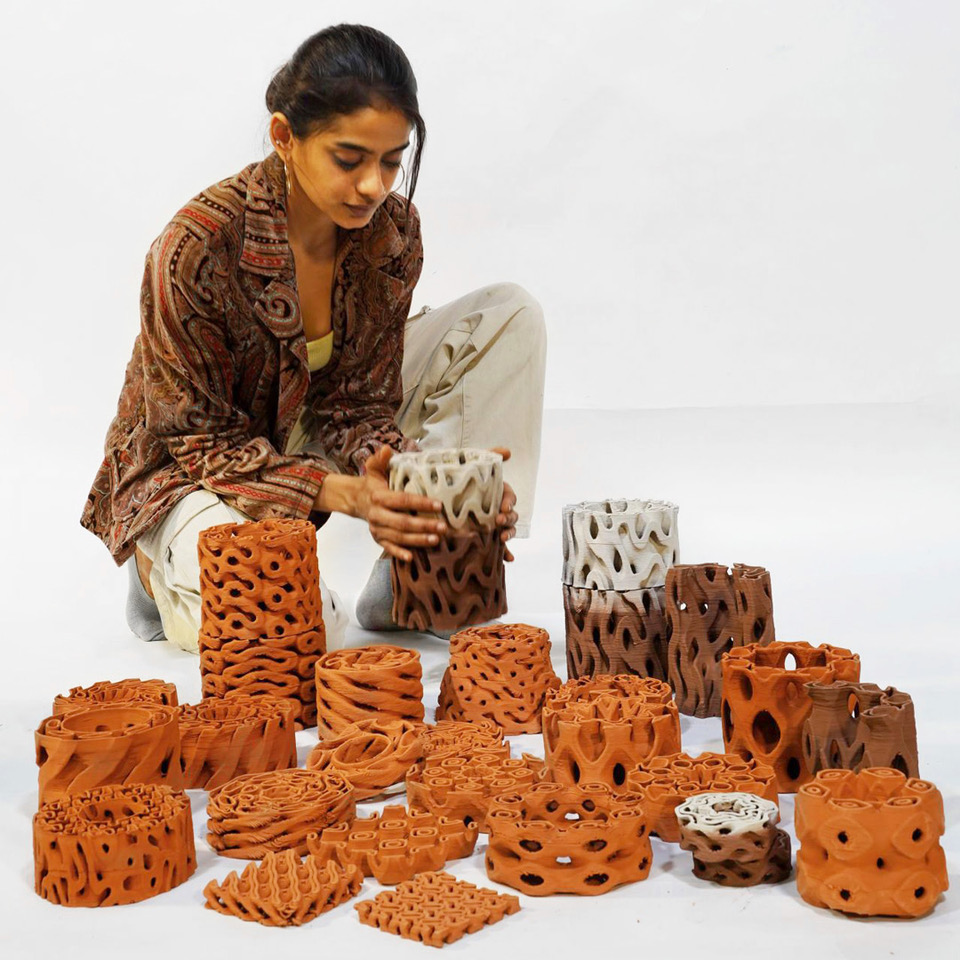Since 2012 wasp It brings 3D printing technology to universities around the world. Including the Bartlett School of Architecture in University College London (UCL)The Delta WASP 40100 clay printer has been used in the laboratories of the College of Design and Manufacturing for more than two years. Thanks to their high accessibility and open system architecture, these devices provide ideal conditions for testing new materials and additive manufacturing techniques. Under the guidance of Professor Arthur Pryor, students had the opportunity to work directly with machines and realize innovative projects.
In 2024, students of the Additive Manufacturing Group completed their master's theses and published their research results. The group consists of two teams, each presenting their own projects: Tom Younger, Tianyang Li and Qinyuan Zheng with their multi-nozzle additive manufacturing project and Rameshwari Jonnalagedda with their TerraMound project. That same year, Monisha Sridhara's Bartlett School graduate thesis project was listed fifth in the Architectural Construction category in the Material Source article “Top 24 3D Printing Projects and Practices of 2024.”
The team led by Tom Younger, Tianyang Li and Qinyuan Zheng developed a multi-nozzle extrusion system intended to produce silicone auxiliary tiles for the pneumatic shade system. Lightweight and “breathing” window frame structures regulate the amount of light entering the building facade. By pumping air into chambers filled with silicone membranes, the auxiliary patterns expand and allow more light to pass through the facade. An optical sensor controls the inflation of the pillows based on lighting conditions. This project demonstrates how architectural structures can be designed flexibly and energy efficiently using 3D printing.
Rameshwari Jonnalagedda's TerraMound project aims to develop an efficient cooling system through 3D printing on ceramics. Inspired by the natural shapes of termite mounds, this system uses simple surface geometries to maximize cooling and airflow. The prototype includes a desk fan with a porous ceramic structure through which air is drawn upward while water flows downward from the top, increasing efficiency through evaporative cooling. The project demonstrates the possibility of using such structures in walls to regulate heat, air and light.
Monisha Sridhara Ceram-Screens project is based on the traditional Jaali screens of Indian architecture, which control light and heat while improving ventilation. These decorations, which were originally made of stone or wood, have now been reinterpreted through 3D printing on ceramic. The project aims to revive the flexibility and functionality of this traditional technology through modern additive manufacturing techniques. The units are printed on Delta WASP 40100 clay, glazed and assembled with cement mortar to increase their durability.
These projects demonstrate the versatility and potential of 3D printing in architecture. By leveraging WASP technology, students have been able to develop innovative solutions that push the boundaries of traditional construction methods and enable new approaches to design and manufacturing.
Don't miss any more news!
We deliver the most important news and information on the topic of 3D printing to your inbox every week for free. Log in here. We are there too LinkedIn To exist. You can us Follow here!

“Certified tv guru. Reader. Professional writer. Avid introvert. Extreme pop culture buff.”







More Stories
Samsung Quantum Dot TV: Art meets technology
Pitch: €56m for energy startup Reverion
Plastoplan: Plastics for Energy Transition